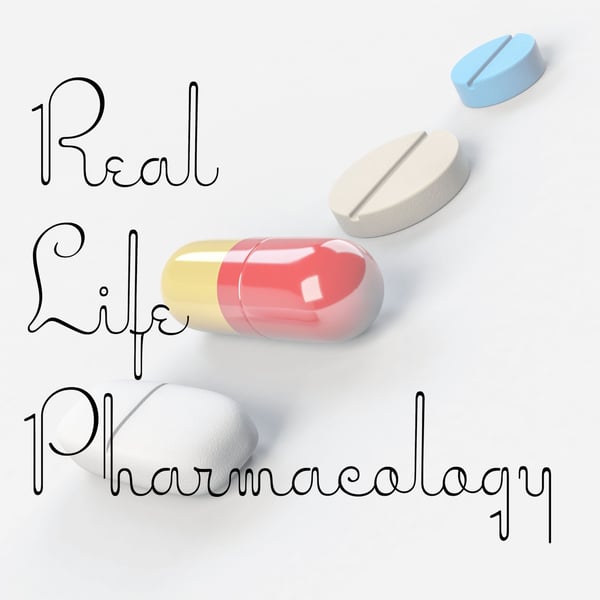Colchicine Pharmacology
Real Life Pharmacology - Pharmacology Education for Health Care Professionals
Eric Christianson, PharmD; Pharmacology Expert and Clinical Pharmacist
5 • 716 Ratings
🗓️ 8 April 2021
⏱️ 13 minutes
🧾️ Download transcript
Summary
Colchicine ultimately works by reducing the activity of neutrophils that help contribute to pain and inflammation associated with gout.
Colchicine does have some drug interactions with medications and grapefruit juice via CYP3A4.
The most common dose limiting side effect of colchicine is diarrhea.
Colchicine can be used as a potential alternative to NSAIDs or corticosteroids in the management of a gout flare.
Transcript
Click on a timestamp to play from that location
| 0:00.0 | Hey all, welcome back to the Real Life Pharmacology podcast. I am your host, pharmacist, Eric Christensen. |
| 0:07.0 | As always, go check out real lifepharmacology.com. Go subscribe there and snag your free 31-page |
| 0:15.7 | PDF on the top 200 drugs. Great little study guide. Absolutely free, no cost to use, simply just an email |
| 0:22.5 | to get notifications when we've got new podcasts and new content available there. So again, |
| 0:29.3 | go to real-life pharmacology.com and snag that free resource right there. All right, so let's |
| 0:37.2 | talk about the drug of the day today, and that is going to be Colchazine. |
| 0:42.4 | Brand name of this medication is Colchris. |
| 0:45.9 | That's the most common brand name that I hear in clinical practice anyway. |
| 0:51.7 | And this medication does have a bunch of unique uses. However, 99% of the time, |
| 1:01.4 | the indication that I see this medication used for is gout. That is mostly what I'm going to focus on. |
| 1:09.3 | There's things like Mediterranean fever. There has been |
| 1:13.7 | potentially some evidence in reducing cardiovascular risk as a secondary prevention type agent. |
| 1:22.2 | I can't say at the time I'm creating this podcast that I'm real you know, real sold on the evidence and the risk versus |
| 1:30.7 | benefit of doing that. But that may be something that you see more evidence on going forward |
| 1:37.9 | in the future. But again, I'm going to focus mainly on that gout indication. |
| 1:48.6 | So mechanistically, how does it work? |
| 1:59.8 | It blocks beta tubuline polymerization into microtubules, which ultimately reduces the activation or activity of neutrophils. |
| 2:03.6 | Okay. |
| 2:04.4 | And in gout, remember, inflammation plays a huge role in the pain associated with a gout flare. |
| 2:13.8 | Nutrivils are really going to facilitate and exacerbate that inflammation and pain. |
| 2:21.0 | So again, by kind of reducing that activation, activity of those neutrophils, |
| 2:28.4 | we can help manage symptoms of a gout flare. |
... |
Please login to see the full transcript.
Disclaimer: The podcast and artwork embedded on this page are from Eric Christianson, PharmD; Pharmacology Expert and Clinical Pharmacist, and are the property of its owner and not affiliated with or endorsed by Tapesearch.
Generated transcripts are the property of Eric Christianson, PharmD; Pharmacology Expert and Clinical Pharmacist and are distributed freely under the Fair Use doctrine. Transcripts generated by Tapesearch are not guaranteed to be accurate.
Copyright © Tapesearch 2025.

